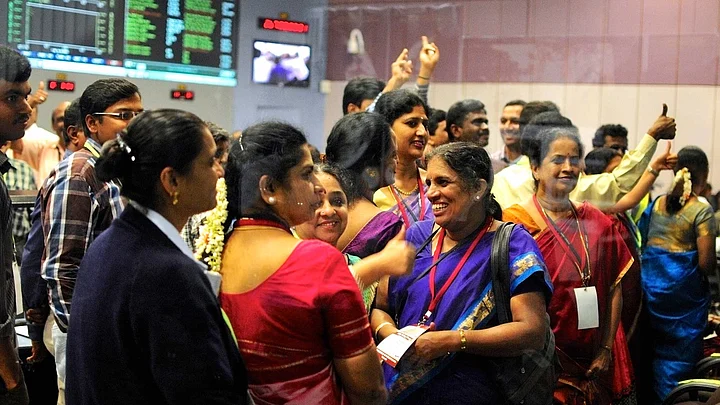Growing up in Gujarat in the 1990-2000s was an interesting sociological study. The social science class would boast about state pride and role models. The mention of Gandhi, Sardar, Sarabhai, Dhirubhai, (now even Narendrabhai) would make us thump our chests with pride.
“I want to be just like my mother” was something you would often hear from the corner row where the girls sat. At recess, we would open our nashta-box and conversations would switch to what we loved the most – food. “Today it’s my mom’s speciality, thepla and chunndo”.
“Alaa! no girl in this class can make paav-bhaaji like my mom.” “My mom, best chef! Even my younger sister can make round rotis now”. To this, the class-topper would say with a sense of pride, “No food for me today. This is my seventh Gauri Vrat.”
In those conversations lay the dichotomy of our society and early education – we boys were fed by our moms and aspired to be like Kalam, while the girls who outperformed us in every science test, had no icons except their moms to look up to.
Like the rest of Gujarat, over 85 percent of my female classmates did not go beyond a bachelors’ degree in science, engineering and medicine. Only 13 percent of women in my typical urban Gujarat neighbourhood went out to work. Chances are, that despite a female chief minister and the country’s most powerful female Rajya Sabha member, the social science textbooks in the state in the coming years are bound to boast only about the Gujarati “Bhais”.
Gujarat is not an isolated example. The lack of female national icons, particularly in science, technology and medicine has severe consequences.
What is a nice woman like you is doing in a business like this?Journalist to the Program Director of Agni-IV Missile
The average employment rate of women in India is only 24 percent (compared to the world average of 40 percent) . This means only 2 out of 10 young-to-adult Indian women go out and work. If we remove agriculture, the employment of women in the service sector (heavily dominated by science and technology) is only 1 in 10.
So, if the graduating school class of yours, like mine, had 20 female students, 18 of them are currently likely to be unemployed or housewives. These statistics have become an inherent part of our social fabric, making us remarkably oblivious towards them. To get a sense of how bad the situation is, ask any JEE top-ranked student to name more than five female Indian scientists.
Men, favoured by slightly better statistics in their pursuit of scientific and engineering training, lack empathy or fail to recognise the diffculty women often face in surviving in a land with slim opportunities, with absolutely no icons to look up. A Govind Nihalaniesque scene of classic sexism could in fact be observed till date in almost every household of urban Gujarat – educated working husbands sipping banned alcohol with his friends on the rooftop, while their wives serve them ice and appetisers. This is a scene many of us grew up watching, not realising then that this fundamentally changes the fate of scientific and technological goals in the world’s largest democracy.
We often see collections of “Ten quotes that make you feel proud to be women” from celebrity filmstars, sportswomen to women politicians (surprisingly, the latter is a category that none of my schoolmates aspired to be).
Somewhere, someone has to realise we need female role models in science and technology. In today’s India, we simply can’t keep quoting mythological goddesses or historical figures like Jhansi ki Rani as female icons. Just one Kalpana Chawla is not enough. We need our school textbooks to showcase Tessy Thomas, Anna Mani, Darshan Ranganathan, Archana Pai and many others that we are shamefully unaware of. A nation cannot fulfil its constitutional duty of ushering in a scientific temper when moms, sisters and dadis are trapped inside the walls of household responsibilities.
So now I take up the task of promoting my ‘science role models’ – a Limca Book Record holder and educational writer, the U.T. Austin and Princeton PhD professors at Georgia Tech who are world experts in Einstein’s theory of relativity and a leader of one of the most successful scientific collaboration in the history of the human race. One of them is my mother, some of them are my current research advisors and at least one of them is my boss! But none of them have ever made me feel inferior.
(Karan Jani is a research scientist in Einstein’s General Relativity and part of the team behind the discovery of gravitational-waves and black holes. He serves as the Vice-President of Student Government and is also a research fellow on National Security & International Relations. To learn about his random existential ramblings, contact him on twitter @AstroKPJ.)
(At The Quint, we question everything. Play an active role in shaping our journalism by becoming a member today.)
